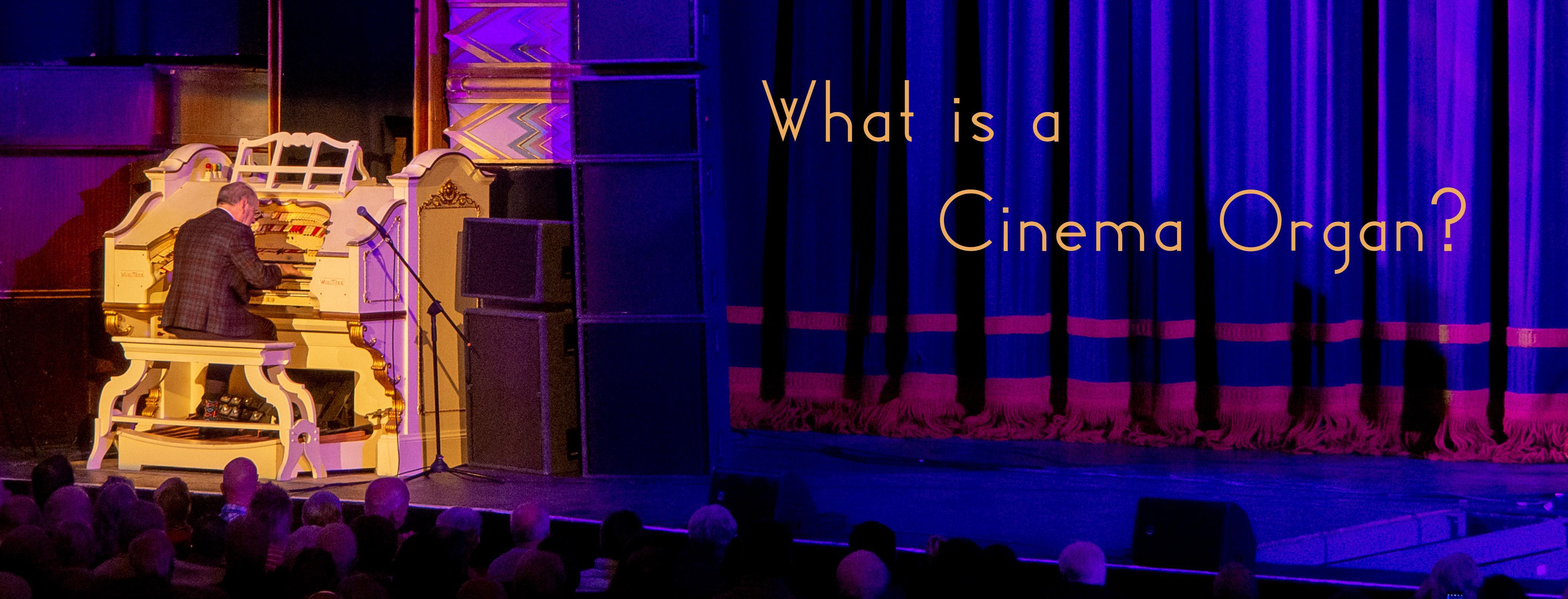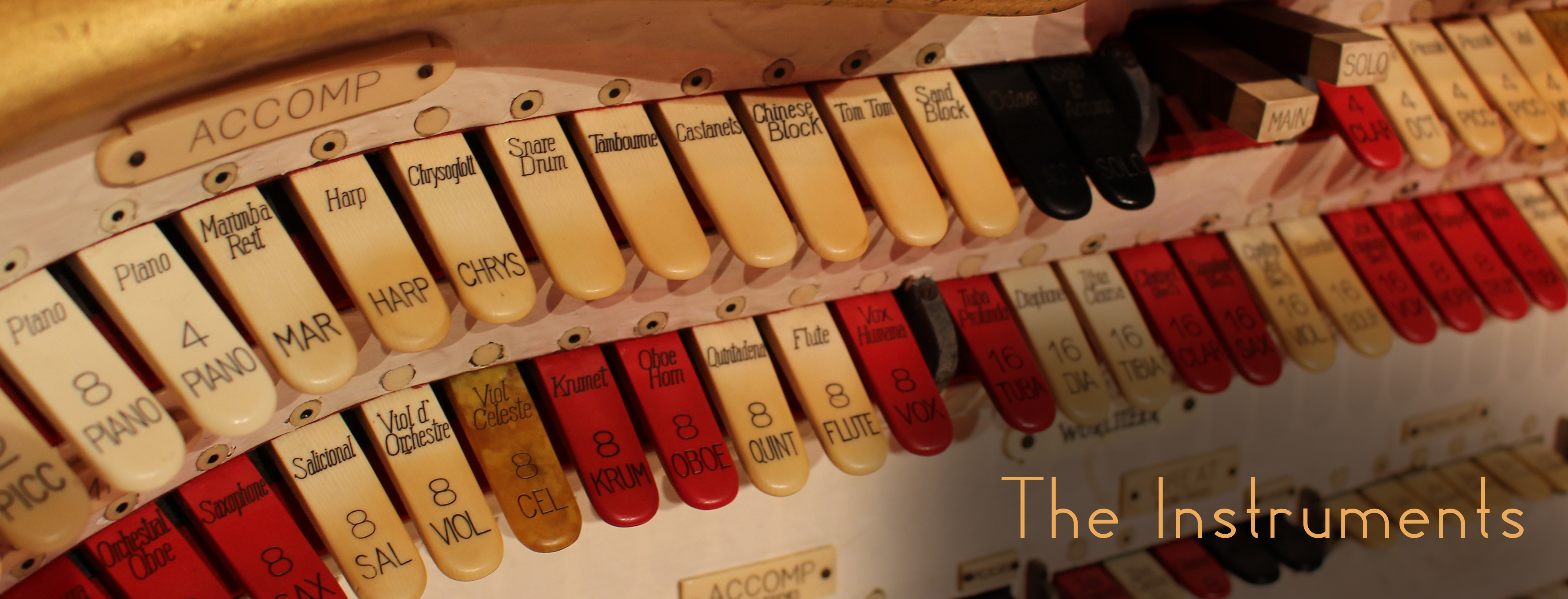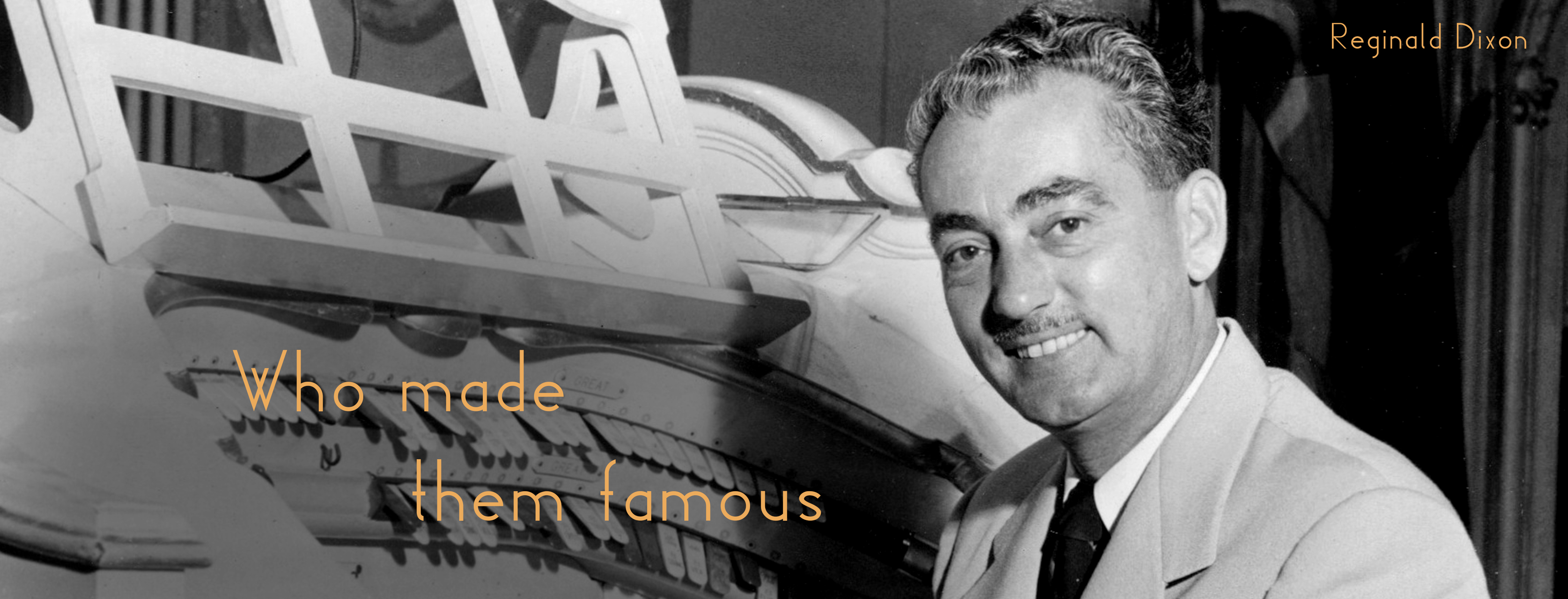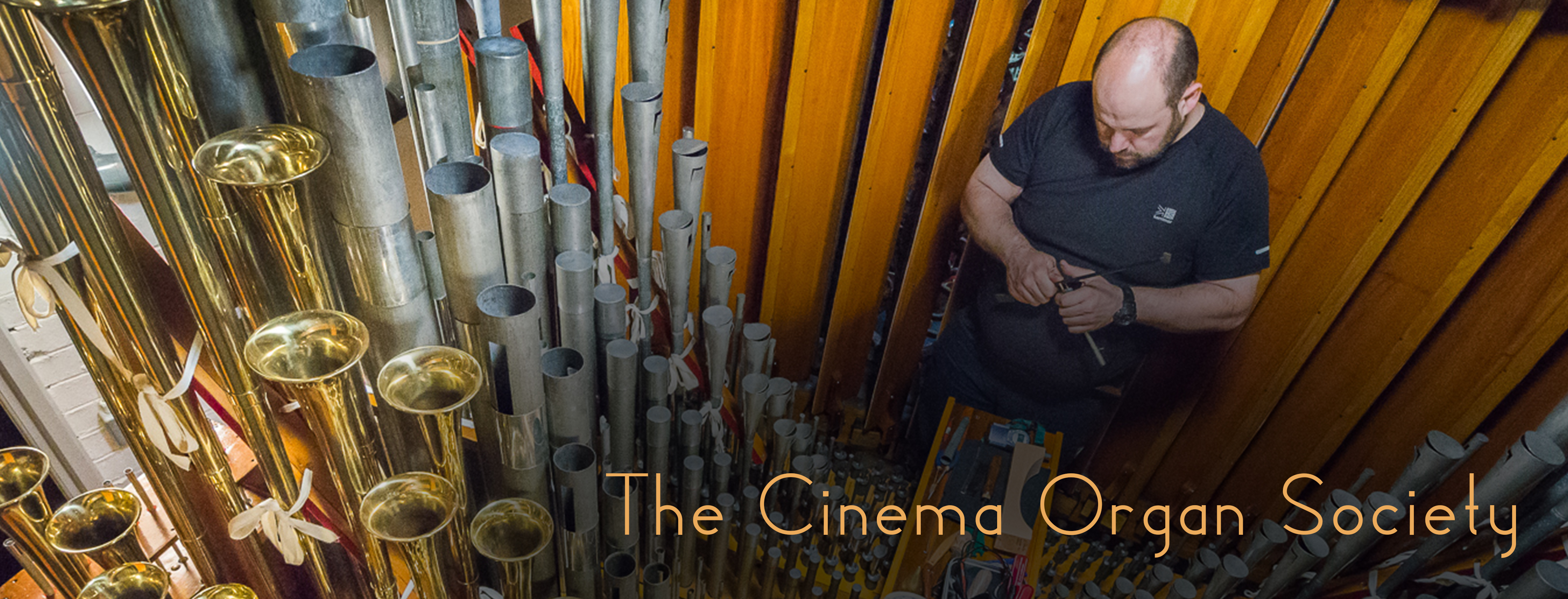
These instruments, also known as Theatre Organs, made quite a name for themselves throughout the 1920s & 30s as they appeared in the major picture houses of UK cities. Their purpose (to begin with) was to replace the too quiet pianos and the too expensive orchestras of cinemas in the accompaniment of silent films. Therefore, they were equipped to produce hauntingly similar sounds that an orchestra might produce, as well as many novelty sound effects to compliment the action on-screen. Even in the days after the silent pictures, going to cinema was more than just seeing a film, these instruments rose in the spotlight to accompany stage shows, gang shows, Saturday morning pictures and of course the interlude, which lasted right up till the end of the 60’s.
Sadly, as the grand picture palaces of this era were closed, repurposed or demolished, many of the organs too fell into disrepair. It was the work of committed volunteers who saved only a comparatively small number of these instruments from scrap, and gave them new leases of life in existing and new venues. Today, there are dozens of instruments across the UK in locations such as town halls, vintage cinemas, private residences, purpose-built venues and even golf courses!
Because of the huge variety of sound at the organist’s finger-tips, every artist has their own sound and style. Even if several were to play the same instrument, their use of it and the sounds produced would be completely different, this makes the Cinema Organ unique

Most people think of a Wurlitzer when remembering organs in Cinemas, but they weren’t the only ones – other manufactures such as Compton, Christie and a multitude of others also had their organs singing away. But Wurlitzer was really the first and its all thanks to a chap called Robert Hope-Jones, he was a telephone engineer from Lancashire who combined his knowledge as an engineer and his love of organ music. After an unsuccessful business venture in the UK, he moved to the US and eventually teamed up with Rudolph Wurlitzer and began rapidly changing traditional techniques, leading to the creation of the Cinema Organ.
As the name suggests, it’s an organ – all the sound is produced by pipes and wind passing though them, exactly as you would find on any classical or church organ. However, the Cinema organ has a few things you won’t find on a traditional instrument. Firstly the extensive use of a deep rich tremulant, this means the sounds produced have a vibrato like orchestral instruments or the human voice. The Cinema Organ also meant the development of certain sets of pipes that had never been produced before and of course they had all the orchestral percussions such as Xylophone, Chimes, Glockenspiel, Drums, Cymbals and much more! Don’t forget that all the percussion instruments are real – no sound is produced electronically – It’s all mechanical.
Find your nearest cinema organ with regular gigs here

You’ve probably heard of the famous Blackpool Tower Ballroom, well its somewhat ironic that arguably the most famous Cinema Organ in the UK ins’t in a Cinema! Reginald Dixon and his popularity from 1930-1980 is probably responsible for the the ‘Mighty Wurlitzer’ to be in the hearts and minds of many and to make you think of the seaside. Sandy McPherson, Dudley Savage and Robin Richmond are other names of the past who had a huge radio following – The stars of the days were really stars! In the 30’s a poll was sent out to listeners asking for their favourite radio personally of all time, the top three were Gracie Fields, Reginald Foort & Reginald Dixon – two of them were organists. As the organs faded from the cinema, they also fell out of love on the airwaves and a huge number of regular broadcasts was reduced to a weekly show called ‘The Organist Entertains’ which ran for 49 years until 2018 when the BBC axed it.
Don’t worry! It’s not all doom and gloom, The Cinema Organ Society is dedicated to supporting the artists of today and encouraging the artists of tomorrow. Although today’s Cinema Organists are not the radio stars they once were, they are are still busy people.
Find out about current UK artists here
Information regarding other artists past and present can be found at the Essex Organ Museum and ATOS websites
To appreciate the wide variety of sounds produced by different Cinema Organs and artists, visit our Videos Page .

The Cinema Organ Society was formed in 1953 by organist Hubert Selby and enthusiast Tony Moss. In the early years, members would meet in cinemas up and down the country for live music events, but with organs in Cinemas being removed, the Society ended up buying three to ensure that the sound of the Cinema Organ would continue. Alongside its own instruments, members of the Society have helped to save, restore and install other instruments up and down the country.
Read more about the Cinema Organ Society here
